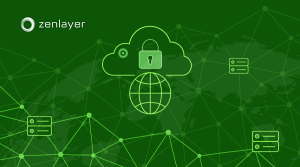Just as businesses start committing to the cloud, another trend starts to emerge – edge computing.
Right now, edge computing is trending in North America for a variety of reasons. As with all technology, moving to the edge is simply the next evolution from the cloud.
While edge computing and cloud computing will work hand-in-hand, businesses are starting to find that for some things, closer data processing is the better choice.
Growing Number Of Devices
Experts believe there will be 8.4 billion IoT devices connected by the end of 2017 and that number will grow to over 20 billion by 2020. It’s important to note that that prediction includes consumer and business devices. As the dependency on IoT devices grows, so does the need for faster processing and less network congestion.
The solution is edge computing. It’s a key player in the IoT trend. Taking some of the pressure off of the cloud means a better user experience with devices and more cloud resources for other uses, such as basic data storage and applications.
The Need For Instantaneous Processing
Cloud processing seems fast until you need instantaneous processing. For instance, with autonomous vehicles every millisecond counts. Having data processed closer means nearly instant results for things such as braking at a moment’s notice.
One study shows that edge computing shaves processing time down to 169 ms from 900 ms with the cloud. The cloud works for many applications and devices. However, edge computing is becoming a trend in North America due to the need for faster processing for a growing number of IoT devices.
While every IoT device doesn’t need instant processing, such as a smart refrigerator, many devices do. For instance, IoT devices in the healthcare industry need immediate responses to help healthcare providers make life and death decisions in emergency situations.
Increased Cloud Adoption Rates
Ironically, higher cloud adoption rates are also contributing to the move towards edge computing. For instance, a two-lane road that makes a commute quicker gradually gets more congested as people start using it. Instead of being faster, now the road stays backed up. The result is the need for an alternative. In this case, edge computing becomes the alternative for a highly congested cloud.
The cloud is only able to handle so many devices and so much data before consumers notice a decrease in performance. By moving some things to edge computing, the load is lessened, making the cloud more useful again. It’s only by working together that edge computing and the cloud are able to offer optimal performance for businesses and consumers.
According to Gartner, the public cloud market is beginning to stabilize in terms of growth. Their study shows the growth rate peaking in 2017 at 18%. A decline could follow. This is proof of the growing trend towards edge computing. Right now, the biggest growth in the cloud industry is expected to come from infrastructure as a service.
Too Much Pressure On Networks
Sending large loads of data back and forth to the cloud results in congested networks that just aren’t equipped to handle the type of bandwidth needed for big data. Many IoT devices are starting to become their own mini data centers. It’s not cost effective to send the equivalent of a mini data center to the cloud for processing and then back to the device. All this does is slow down results.
To relieve the pressure being put on networks and reduce hardware costs, businesses are turning to edge computing. Instead of all data being sent to the cloud or processed over the entire network, it’s processed close to the source, at the edge of the network. Only the most important data is then sent to the cloud or back to the network.
Is it time for your business to invest in this new trend? Learn more about edge computing and when it’s the best choice for helping your business grow.







